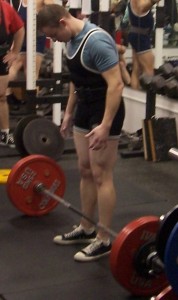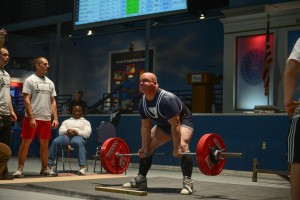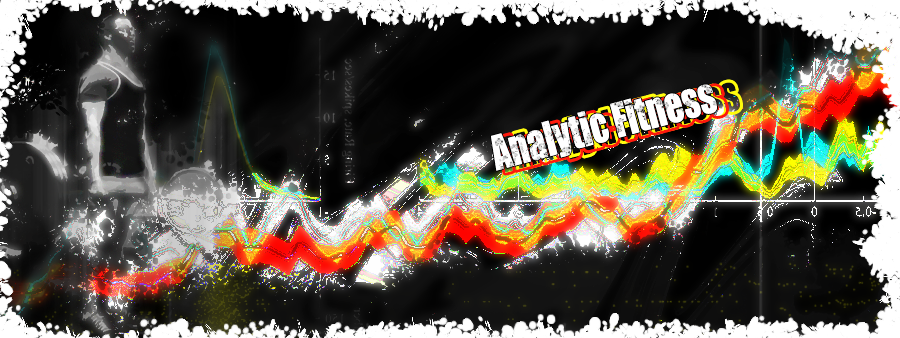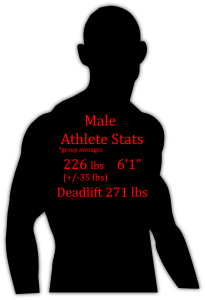Activating the deadlift stances
I didn’t originally intend to return to the deadlift so quickly, but life happens and I already had this post ready to rock.
This is a follow up of the study in my previous deadlifting post, which examined the sumo and conventional stances of the deadlift. That previous study was done by the same researchers that did this study, Escamilla, et al. This follow up study was published 2 years later and is titled, An electromyographic analysis of sumo and conventional style deadlifts.
The results of the 2000 study caused the researchers to make a couple of predictions. The first was that the sumo stance should involve more quad muscle activation than the conventional stance. The researchers also predicted that the conventional stance would involve more hamstring muscles than the sumo stance. The other prediction was that the sumo stance should be slightly safer for the lower back. That was despite the mechanics of the conventional stance providing more opportunity to strengthen the lower back and hamstrings.
In the 2002 study, the researchers actually recorded the activity of the muscles across the body as a group of athletes performed the two stances. The study was very straight forward. So, let’s get into it!
Methods
The researchers studied 13 D1 college football athletes as they performed sets of the deadlift. The athletes used a 12RM weight. The athletes did different sets for the sumo stance and for the conventional stance. They also did sets while wearing a weight belt in order to see how their muscle activity patterns were affected.
The researchers recorded the athletes with 6 high speed synchronized cameras. The muscle activity was recorded using electromyography (EMG), which is basically connecting a wire to the surface of the muscles to record the electrical activity.
The descriptive info is listed in the figure below. As always, they’re group averages and rounded to the nearest whole number for the ease of viewing.
I will also refresh everyone’s memory about the stances of the deadlift. The conventional stance has the lifter generally stand with his/her legs straight down to the bar. Below is a picture of me from a meet in 2009. I used the conventional stance.

Conventional Stance Deadlift
The sumo stance is pretty much like the name implies, with the lifter taking the sumo wrestler kinda stance at the bar. Unfortunately, I don’t have a picture of myself using it. Below is a picture of another lifter using the sumo stance.

Sumo Stance Deadlift
In both cases, once a lifter has taken the chosen stance at the bar, s/he reaches down, grabs the bar, and “pulls” the weight up until standing straight up. Without question, nuances abound with the execution of the deadlift. But you get the idea.
Results
In a nutshell, the only difference of the muscle activities between the stances was that the sumo stance elicited more activity in the quad muscles.
The researchers did not find that the conventional stance used more lower back muscle activity or hamstrings muscle activity than the sumo stance when performing the deadlift. Either stance worked the entire posterior chain of muscles very well, from the hamstrings on up to the showboating traps.
When it came to the use of a weight belt, the researchers found a difference…but not by stance. Regardless of which stance the athlete used, wearing a weight belt caused more oblique muscle activity and less rectus abdominis. Aka, more side abz and less showboat abz.
Implications / Thoughts
Much like my thought in the last discussion of the deadlift, this work really shows that the the two stances are comparable in the muscles that they train. While the sumo stance did utilize more quad muscles than the conventional stance, the difference was not very large. I would hypothesize that a lifter would have to sumo stance deadlift a whole lot for that difference to matter for their quad development. Doing quad-focused exercises would be far more productive if quad development is the goal.
While there was a difference in the activity pattern of the abdominal muscles when wearing a belt vs not, the researchers explained in their discussion that the effect of the belt is primarily to increase intra-abdominal pressure. Doing that takes force off the spine during the movement of a lift and provides a protective effect. I would also argue that if you cared so much about your abz, then do abz-specific exercises to develop them. Don’t choose to wear a belt or not based on the different activity patterns.
And now, I get to what I said before. The important thing here is that the deadlift is a great single exercise that will work most every muscle in a lifter’s body. The choice of whether to use a sumo stance or conventional stance is up to the lifter. Factors such as personal preference, technique knowledge, mobility, or injury status are perfectly valid reasons to choose one stance over the other. For sure, lifters do not need to worry about missing out on something because they use one stance more often than the other. And that isn’t even getting into all the other deadlift variations that don’t involve the stances.
In Conclusion
Deadlifting is one great way to develop overall strength and to efficiently train many muscles. Lifters have plenty of deadlift variation options to find what works for them. Don’t close yourself off!
If you have any questions about this study or anything I said, please feel free to leave a comment. I will get back to you and others may have insight to offer, too. If you have any questions or topic suggestions that you would like answered as a post, then please email me at robert@analyticfitness.com.
Don’t forget to like Analytic Fitness on Facebook, or follow me on Twitter or the other social medias!






POST REPLY